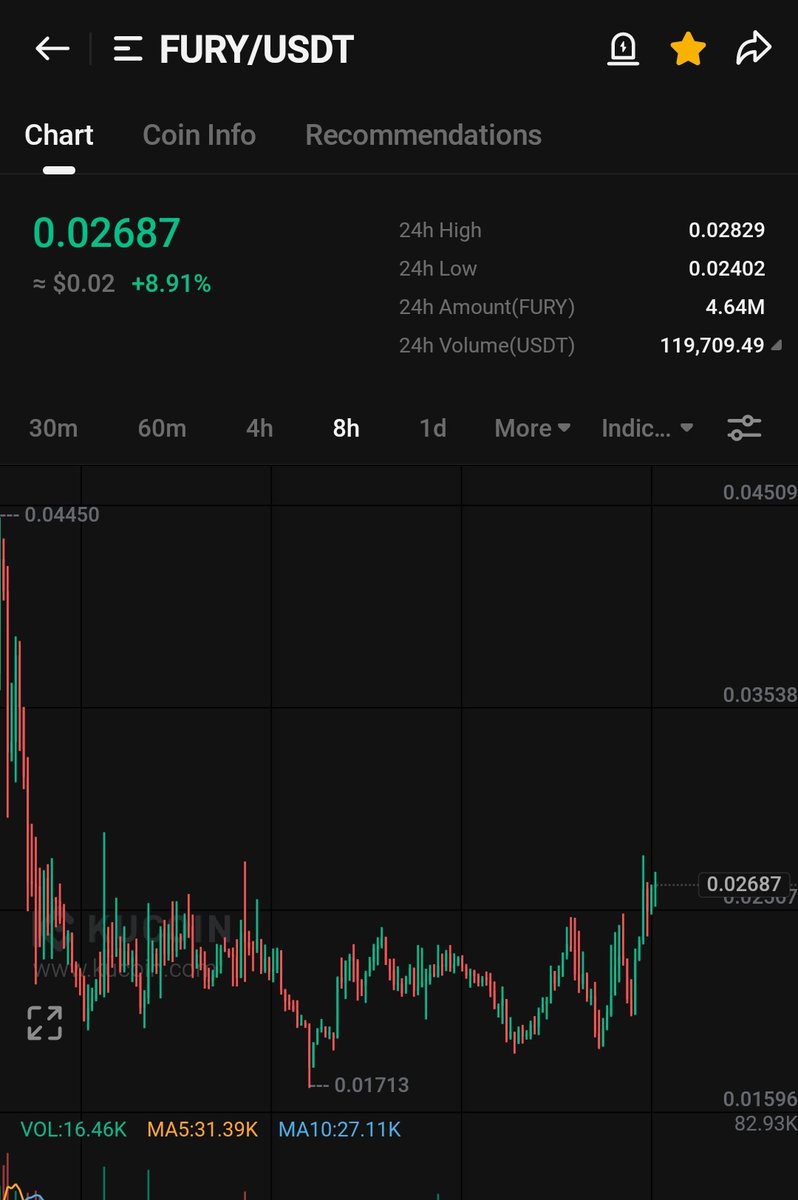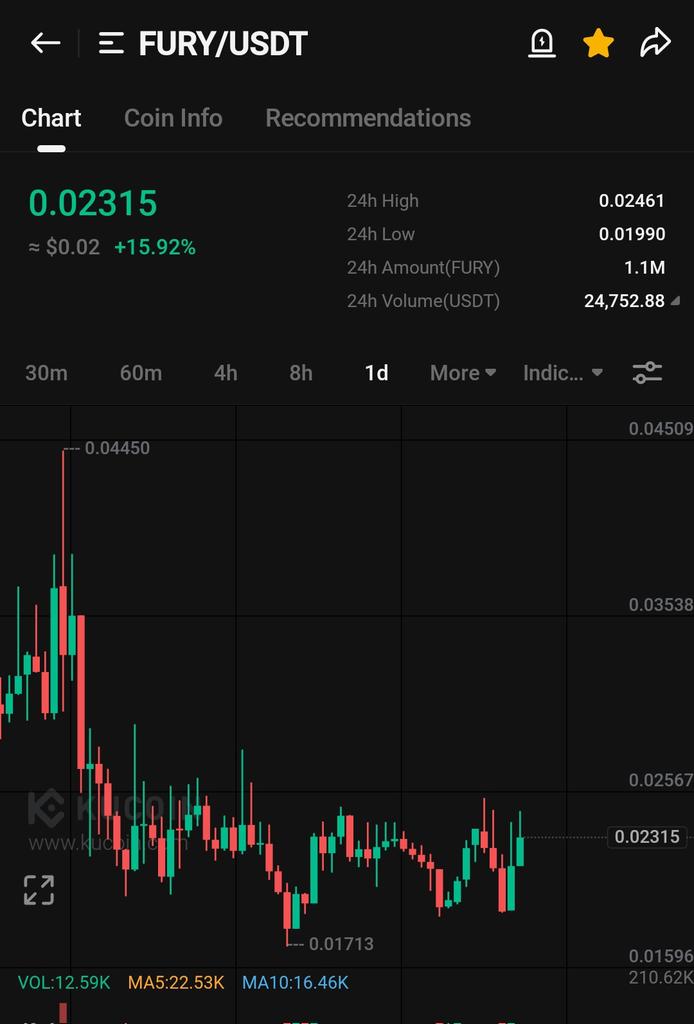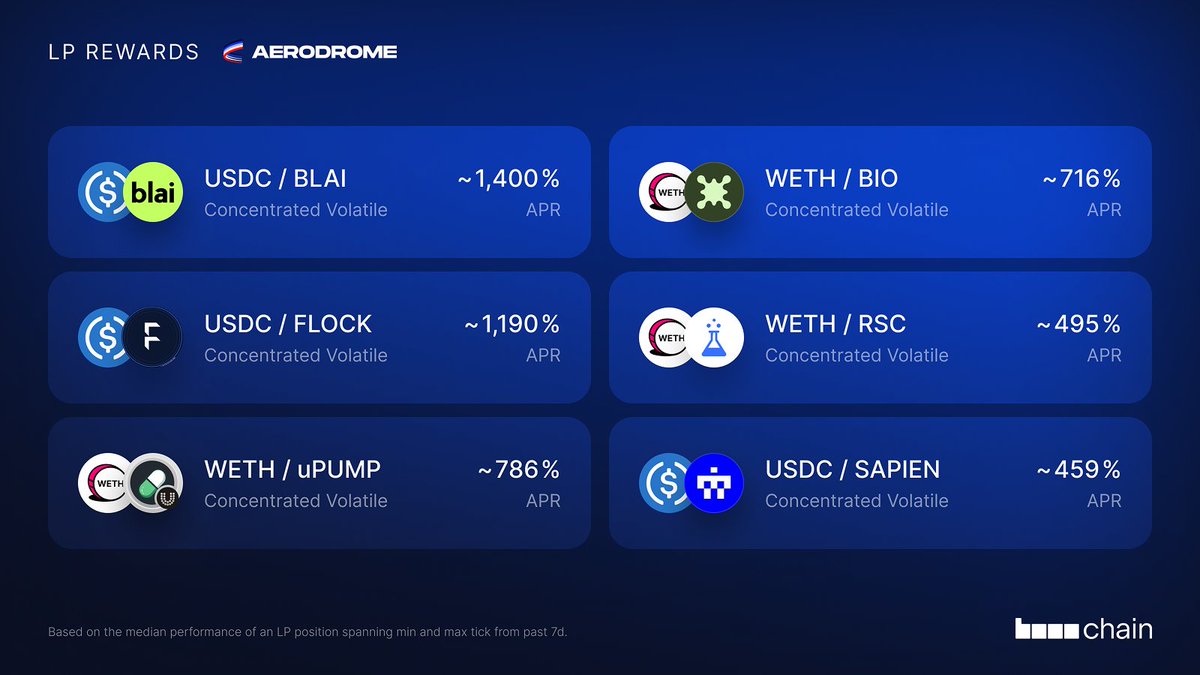Prezzo: BIO
in EUR€0,13825
-€0,0084467 (-5,76%)
EUR
Nessun risultato. Controlla l'ortografia o prova con un'altra criptovaluta.
Capitalizzazione di mercato
€283,35 Mln #106
Offerta circolante
2,05 Mld / 3,32 Mld
Massimo storico
€0,77664
Volume in 24 ore
€122,97 Mln
3.9 / 5


Informazioni su BIO
Disclaimer
I contenuti social forniti in questa pagina ("Contenuti"), inclusi, a titolo esemplificativo ma non esaustivo, tweet e statistiche forniti da LunarCrush, provengono da terze parti e vengono forniti "così come sono" esclusivamente a scopo informativo. OKX non garantisce la qualità o la precisione dei Contenuti e i Contenuti non rappresentano il punto di vista di OKX. Non è destinato a fornire (i) consigli o raccomandazioni in materia di investimenti; (ii) un'offerta o una sollecitazione all'acquisto, alla vendita o al possesso di asset digitali; oppure (iii) consigli di natura finanziaria, contabile, legale o fiscale. Gli asset digitali, tra cui stablecoin e NFT, comportano un elevato livello di rischio, sono soggetti a fluttuazioni estreme. Il prezzo e le prestazioni degli asset digitali non sono garantiti e potrebbero variare senza preavviso.
OKX non fornisce raccomandazioni su investimenti o asset. Devi considerare attentamente se il trading o l'holding di asset digitali è adatto a te alla luce della tua condizione finanziaria. Consulta un professionista legale/fiscale/finanziario per domande sulla tua specifica situazione. Per ulteriori dettagli, fai riferimento ai nostri Termini di utilizzo e all'Avviso di rischio. Utilizzando il sito web di terze parti ("TPW"), accetti che qualsiasi utilizzo del TPW sarà soggetto alle condizioni del TPW e disciplinato dalle stesse. Se non espressamente dichiarato per iscritto, OKX e i suoi affiliati ("OKX") non sono associati in alcun modo al proprietario o all'operatore del TPW. Accetti che OKX non è responsabile di eventuali perdite, danni e qualsiasi altra conseguenza derivanti dall'utilizzo del TPW. Tieni presente che l'uso di un TPW potrebbe comportare una perdita o una diminuzione dei tuoi asset. Il prodotto potrebbe non essere disponibile in tutte le giurisdizioni.
OKX non fornisce raccomandazioni su investimenti o asset. Devi considerare attentamente se il trading o l'holding di asset digitali è adatto a te alla luce della tua condizione finanziaria. Consulta un professionista legale/fiscale/finanziario per domande sulla tua specifica situazione. Per ulteriori dettagli, fai riferimento ai nostri Termini di utilizzo e all'Avviso di rischio. Utilizzando il sito web di terze parti ("TPW"), accetti che qualsiasi utilizzo del TPW sarà soggetto alle condizioni del TPW e disciplinato dalle stesse. Se non espressamente dichiarato per iscritto, OKX e i suoi affiliati ("OKX") non sono associati in alcun modo al proprietario o all'operatore del TPW. Accetti che OKX non è responsabile di eventuali perdite, danni e qualsiasi altra conseguenza derivanti dall'utilizzo del TPW. Tieni presente che l'uso di un TPW potrebbe comportare una perdita o una diminuzione dei tuoi asset. Il prodotto potrebbe non essere disponibile in tutte le giurisdizioni.
Prestazioni prezzo BIO
Anno trascorso
--
€0,00
3 mesi
+142,93%
€0,06
30 giorni
+164,40%
€0,05
7 giorni
-35,96%
€0,22
BIO sui social

🤔 @AerodromeFi Nuovi pool LP: $BLAI, $uPUMP, $RSC, $SAPIEN
Il nuovo APR per $USDC – $SAPIEN è attualmente un rendimento di ~442.3% (intervallo dell'8%)
Il prezzo di $SAPIEN mostra alcuni segnali di consolidamento, se nei prossimi 3 mesi ci sarà un sblocco lineare senza notizie positive evidenti, il prezzo potrebbe continuare a oscillare in questo intervallo
Se possiedi $SAPIEN, potresti considerare di bloccarlo nel pool, i guadagni reali derivanti da LP + l'aumento futuro potrebbero superare le aspettative
#KaitoYap @KaitoAI @JoinSapien @albeethekid @Chrismay1208 @RowanRK6 & @trevorkoverko

Recentemente ho imparato per la prima volta a fermarmi e aspettare.
Sono stato anche piuttosto occupato ultimamente, non ho tempo per fare trading.
Ma il mio stato d'animo è migliorato notevolmente rispetto a prima.
Le uniche criptovalute che ho comprato sono $bio e $launchcoin.
Prima ero sempre molto ansioso, ogni volta che vedevo una moneta salire, mi preoccupavo.
Nel mondo delle criptovalute c'è un detto, non so se sia uno scherzo o serio,
che dice: "Pensi sempre che le opportunità siano infinite, ma non apprezzi ciò che hai davanti."
Opportunità come $Trump e $wlfi, se le perdi, non torneranno più.
Tuttavia, molte opportunità si presentano ogni settimana, se non ogni giorno.
Non vale la pena darci troppa importanza; se ci si concentra troppo, si finisce per auto-illudersi, si sviluppa un fomo sfrenato che porta a comprare in alto o a non realizzare i profitti, finendo per perdere.
Io stesso spesso mi faccio prendere dalla frenesia, soprattutto quando perdo, il che porta a guadagni limitati e a molte situazioni in cui perdo tutto.
Un altro motivo è la mancanza di attenzione e riflessione. Ora è difficile trovare asset in cui investire pesantemente, ma quando si investe poco, si tende a trascurare lo stop loss. Molte volte compro solo qualche sol e mi scoccia impostare lo stop loss; non si tratta di grandi somme, quindi è difficile riflettere a fondo, creando un circolo vizioso. È meglio fermarsi e aspettare l'opportunità.
Quando ci si sente confusi o non si capisce, è meglio fermarsi dal trading.
Se si considera il guadagno come l'unico criterio di valutazione, allora riposare può effettivamente superare la maggior parte dei partecipanti al mercato. Giocare solo con le narrazioni che si comprendono, apprezzare ogni centesimo e non rischiare 10 euro per guadagnarne 1.
Guide
Scopri come acquistare BIO
Iniziare a usare le criptovalute può risultare complicato, ma imparare dove e come acquistare criptovalute è più semplice di quanto possa pensare.
Prevedi il prezzo di BIO
Quale sarà il valore di BIO nei prossimi anni? Scopri cosa pensa la community ed effettua le tue previsioni.
Visualizza la cronologia dei prezzi di BIO
Monitora la cronologia dei prezzi di BIO per controllare le prestazioni degli holding nel tempo. Puoi visualizzare facilmente i valori di apertura e chiusura, i massimi, i minimi e il volume di trading tramite la tabella di seguito.

Possiedi BIO in 3 passaggi
Crea un conto OKX gratuito.
Finanzia il tuo conto.
Scegli la criptovaluta.
Domande frequenti relative al prezzo di BIO
Al momento, un BIO vale €0,13825. Per risposte e informazioni approfondite sull'azione sui prezzi di BIO, sei nel posto giusto. Esplora i grafici BIO più recenti e fai trading in modo responsabile con OKX.
Le criptovalute, ad esempio BIO, sono asset digitali che operano su un ledger pubblico chiamato blockchain. Scopri di più su monete e token offerti su OKX e sui loro diversi attributi, inclusi prezzi e grafici in tempo reale.
A seguito della crisi finanziaria del 2008, l'interesse nei confronti della finanza decentralizzata è cresciuto. Bitcoin ha offerto una nuova soluzione imponendosi come asset digitale sicuro su una rete decentralizzata. Da allora, sono stati creati anche molti altri token come BIO.
Dai un'occhiata alla nostra pagina di previsione sul prezzo di BIO per prevedere i prezzi futuri e determinare i tuoi target di prezzo.
Esplora BIO
BIO Protocol è un layer finanziario DeSci che supporta capitali e talenti nella scienza on-chain.
Informativa ESG
Le normative ESG (Environmental, Social and Governance) per gli asset di criptovaluta hanno lo scopo di gestire il loro impatto ambientale (ad es., attività minerarie dispendiose in termini di energia), promuovere la trasparenza e garantire pratiche di governance etiche per allineare l'industria delle criptovalute ai più ampi obiettivi di sostenibilità e sociali. Queste normative incoraggiano la conformità agli standard che riducono i rischi e favoriscono la fiducia negli asset digitali.
Capitalizzazione di mercato
€283,35 Mln #106
Offerta circolante
2,05 Mld / 3,32 Mld
Massimo storico
€0,77664
Volume in 24 ore
€122,97 Mln
3.9 / 5








































